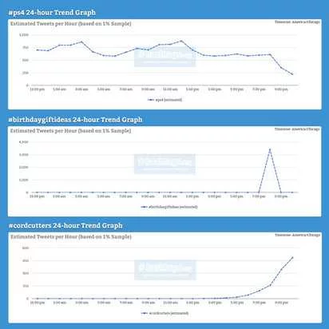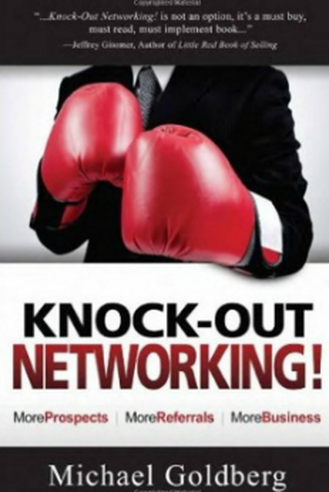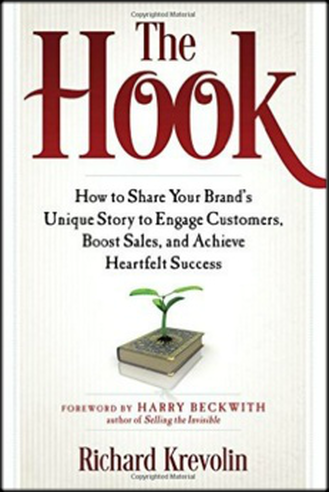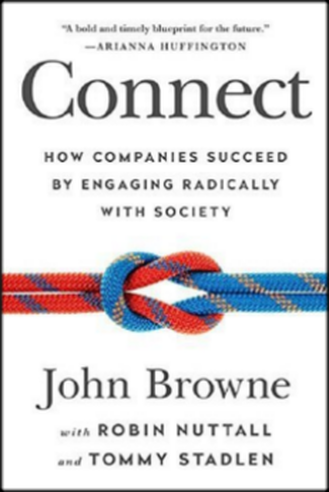While telemarketing, print advertising, and direct mail still have their place, social media marketing can help launch your brand and customer base in a powerful way. Getting started with social media platforms can be a challenge if you don't have any previous experience or insight. Here are the fundamentals of finding your business' social audience through various popular online platforms. Understand Your Target Audience Regardless of who your customers are, you can rightly assume that a majority of them are online and on social media. According to the latest statistics, in a world of 7.3 billion people, 31percent are active social media users and 65 percent of American adults are active on social media. Before you jump online and start posting videos and status updates, however, it's important that you take some time to thoroughly define your target audience. Do you currently have a profile of your target market? Many businesses don't. Developing a clear and concise understanding of your target audience is the first step in successful social media marketing. Make a list of six to eight identifiers of your typical customers (male/female, age, geographic location, education, occupation, hobbies, economic status). Beyond this, list potential motivators that customers may have for purchasing your products or services. Are they bargain shoppers or people searching for a specialty item? Do your clients typically buy online or do they come into a physical location? If you aren't sure about the answers to some of these questions, study a competitor's data for some insights. Perform Keyword Research If you have a website or a blog, you've probably (hopefully) done some keyword research for Search Engine Optimization (SEO) purposes. Targeting certain keyword phrases ideally puts your website in front of the people who are looking for your particular products and services. Those same keyword phrases, along with that buyer persona that you've put together, can also help you maximize your social media impact in several ways. Having a list of relevant keywords can both help you find your audience on social media sites and give you ideas for interesting content. For example, if you've determined that your customers are interested in budget travel opportunities, and you own a lodge in Vermont, you may want to add such phrases as "cheap rooms Vermont" and "hotel discounts Vermont" to your list. There are several ways to do keyword research for social media marketing. Facebook is continuing to upgrade their search engine and now has a more powerful search tool for users. You can search public posts for up to the minute information on any search phrase, which can help you determine popular topics as well as who is interested in them.
Choose and Establish Social Media Profiles
Obviously, not all social media platforms are created equal, and many companies mistakenly believe that they should simply start with Facebook because it is the largest. This isn't always the case as B2B businesses have found that Facebook targeting doesn't provide as healthy returns as some other social media sites. However, if you're marketing directly to consumers (B2C), Facebook could be an excellent choice. Here are some useful stats on some of the top social networks.
What these numbers mean to your business? Based on your target market and these social media profiles, you should be able to determine what the best online platforms would be to begin your efforts. For example, if you are marketing to a younger audience, you'll want to concentrate your efforts on such sites as Instagram, Facebook, and possibly Twitter (check out Snapchat marketing as well). If your target audience is primarily women, Pinterest and Facebook might be better choices. Finally, if doing B2B marketing, LinkedIn and Twitter usually provide the best returns. It's important to remember that every audience is different and what works for one company may not work for another. Also, it's never a good idea to put all of your social media marketing eggs in one basket. Be sure to spread the love amongst several networks. Engage Your New Audience on Social Media Most companies fail to understand that successful social media marketing is built on relationships, which takes a degree of patience as well as time to nurture. Here are three simply strategies for building and engaging with your new social audience.
When you follow these steps, you'll be sure to find success in locating and engaging your target audience on social media. In today's connected world, a business without a social media marketing strategy is foregoing profits and leaving customer choice up to chance. Leveraging social media is one of the best ways to reach and engage both existing and potential clients, allowing for a business' continued growth. Source: http://www.business.com/social-media-marketing/finding-the-right-social-audience-for-your-business/ By Keith A. Quesenberry On APR 19, 2016 When customers need help, they expect companies to offer it quickly and through multiple social media channels — but most companies aren’t set up to do that. Some companies increase their social media staff to offer live responses during big events like the Super Bowl or the Grammys, but then they return to predominately one-way social media or content marketing. Since 2013 the number of customers who expect a response through social media has doubled, according to research from Sprout Social, yet seven out of eight messages to companies go unanswered for 72 hours.
Complicating matters further, consumers expect one brand account to contain responses to all kinds of needs, including marketing information and customer service. But marketing managers simply are not trained to deal with questions or complaints about service, product performance, or other nonmarketing requests. To be more effective at building relationships with consumers online, companies need a cross-functional social media team, one where marketing works together with other departments. Distributing social responsibilities to relevant people across the organization can be efficient, be effective, and help make one-on-one customer engagement scalable. Cross-functional social media teams can leverage the stages of the buying cycle, connecting the right employees with the right customers at the right time. Consumers’ needs change when they are in the prepurchase, purchase, and postpurchase steps of buying, so different employees are more useful to customers at different stages. How can an organization create a cross-functional social media team? First, research and analyze existing social media. Who controls the official brand channels? What systems, policies, and employees are responsible for monitoring social media? From this research, organize a new system. Here is a simple process from my book Social Media Strategy, Marketing, and Advertising in the Consumer Revolution.
When companies implement a cross-functional team well, the results are powerful. In 2014 Hertz shifted from a marketing-centered social media strategy to a cross-functional system built around customers’ needs and expectations. Previously, the marketing department had controlled social media accounts. Marketing staff would publish brand content, but they also received customer complaints. They forwarded the complaints by email to customer service agents, who would then process the requests and email them back to marketing to post on social media. Social media response was limited to Monday through Friday. For the new 24/7 cross-functional team, Hertz partnered with software company Conversocial to easily connect customer service agents to the software that marketing staff uses to monitor social media conversations. The multidepartment system has enabled Hertz to respond within 75 minutes to more than 1,000 individual customers per week. The company that responding to customers in real time through social media has increased customer loyalty, contributing to customer lifetime value. The gourmet burger chain Five Guys, too, utilizes a cross-functional social team through social media monitoring software Hootsuite and a process that empowers local franchises and frontline employees. Each of the over 1,200 Five Guys locations has its own social media accounts to market local promotions, new products, and events to its community. Individual locations also provide customer service, responding directly to customer feedback. For them, monitoring on the local level is more efficient, making one-on-one consumer social media engagement scalable, personal, and sincere. Today’s consumers expect more from companies. They increasingly look for brands that engage with them online and organizations that do reap real benefits. David Packard, of Hewlett-Packard fame, once said that marketing is too important to be left to the marketing people. For social media, that statement is as true as ever. Source: https://hbr.org/2016/04/social-media-is-too-important-to-be-left-to-the-marketing-department This has been out in the open air for discussion over the last few months. Everyone knows that Snapchat is the “thing” to be on and that there’s attention there for those who can earn it (and find ways to entertain and consequently keep it).
Now, the only dilemma to figure out is… how the heck do you use it for business!? Well, maybe it’s not the ONLY dilemma, but you can learn the interface and all the Snapchat secrets and tips in our Snapchat Mastery ecourse. Easy Peasy. You see the thing is, that you can’t just broadcast your posts or products in Snapchat and expect to gain any sort of traction. It’s just not the culture. In fact, most social medias don’t do well with businesses just “pushing” their content to their followers. There’s a native culture and content specific to each social media platform. Think of it like visiting a foreign country. To get the most benefit ideally you’d want to know the language (natively) to understand all the cultural implications. This would give you an edge in understanding the culture and providing and gaining value—over non-natives. Snapchat is a language and has its own culture. Now, it’s probably not nearly as challenging as learning something like Japanese, but with a great attitude and desire for understanding the platform, you can totally do it, without hassle. I hear you… “okay, Emelina we get it, but seriously how do we use this ghost thing in business!?” Gotcha, let me fill ya in on the low down, pronto. What using Snapchat in business comes down to, is how business is conducted with any platform . Whether you’re frequenting chamber mixers or doing all your marketing through Facebook groups--success is found in relationships. Use Snapchat as a mechanism to scale building deep relationships with as many individuals as you can manage. And yes, it’s all about DEEP relationships over many shallow ones. Allow me to give you some context. I’ll compare Snapchat to a traditional business scenario to which you’ll probably relate. In traditional business, the system is this…
This scenario is definitely effective. But… what if you could scale it? Instead of investing a few hours every month into ONE person… what if you could scale it to handle TEN people at once? That’s the beauty of Snapchat. It’s incredibly scalable. Rather than networking SO MUCH one-on-one (meaning a 3-hour mixer here, a 1-hour coffee meeting there, another 1-hour coffee, a 1-hour consultation, etc) you can carry on short, sweet conversations with multiple people at one time. It’s kind of like networking on steroids. Allow me to give you some context. This is what the business or networking system looks like in Snapchat. In Snapchat, the marketing system looks like this…
Snapchat is a dynamic and creative messaging platform. This makes it a natural marketing platform too! Marketing is a combination of being visible, knowing your message, and building deep relationships that matter. Snapchat’s native messaging platform then, is natural for marketing yourself! Snapchat is an EASY platform to market on—if you know your messaging (what you’re here to share and say), you’re willing to put yourself out there AUTHENTICALLY 150%, and you’re open to making friends and building relationships. Snapchat is just like any other business platform in that way.
I hope I’ve at least tickled your senses. Ultimately, Snapchat is an incredibly scalable networking and storytelling platform. Personally, from my experience, I believe that building relationships and telling authentic stories are the most powerful (and SUSTAINABLE) methods to market yourself or your business. Now, all you have to do is figure out how the heck to use that crazy interface! Snapchat isn’t THAT hard, but it’s unlike anything else. If you need help learning the platform and would love step-by-step tutorials, enroll yourself in our new ecourse, Snapchat Mastery. There’s over 3.5 hours of video tutorials, workbooks and over 4 hours of interviews with Snapchat influencers. You’ll learn all the interface tips, tricks, and secrets to improve your storytelling ability. There are hours of videos on how to maximize your time in Snapchat, how to build a crazy-engaged community, and tell stories that engage and make marketing yourself a breeze. You can find all the epic details, and grab a copy of the course for yourself, here. It’s just about time to Master Snapchat. Stop guessing, start getting real results, and supercharge your following. Want a 30-day Snapchat checklist to start growing your account? Download a free worksheet checklist, here. Source: http://www.business2community.com/social-media/use-snapchat-marketing-platform-01518546#jO7ZMlh8JVqkoBz1.97 By Katrina de Leon On Apr 11, 2016 Most elements of communication have moved in the digital direction. Video conferences that once took an abundance of cords and slow, unreliable dial-up connections to coordinate now can be done just by Skyping or FaceTiming someone at the touch of a button. Businesses have had to adapt to the dynamics of this ever-evolving technology landscape, and many have found that their willingness to adopt video elements as a larger part of their marketing strategy pays big dividends. The statistics don’t lie. According to Forbes Insights, at least 75 percent of executives watch work-related videos on business websites at least once a week. Here are four easy-to-implement tips for businesses looking to integrate video into their marketing strategies: • Greet them where you meet them. If a potential customer or new hire is interested in your company, they likely are going to head to your website to find more information about you. Often, businesses have too many words on their home pages, undervaluing their most important online real estate, as well as the time of the person perusing the site. Create a short, one- to two-minute video to explain who you are, what you do and why you matter, and post it to your homepage to tell your story. You can bet that video is going to make a much bigger impact on the person who viewed it than words on a page. • Increase open rates with video. Chances are, if you have ever created and distributed an e-mail through an e-marketing platform such as MailChimp or Constant Contact, you know the value of open rates and click-throughs. You may have spent weeks compiling the content for your e-newsletter, only to find out that less than 15 percent of those who you sent it to actually opened it. According to video marketing platform Vidyard, e-mails with a video call-to-action had a 53 percent higher click-to-open rate on average over those with no obvious mention of video. What’s more, viewers were significantly more likely to buy the product or service highlighted in the video. Video works. Even a 30-second animated spot or live-action video shot from your mobile phone can make a huge impact on getting people to open and view your e-mail marketing messages. • Spice up your trade show booth with elements of video. As with the other marketing strategies mentioned above, video tends to lure people to take a look at what you’re doing. Even on a busy trade show floor – with distractions and noise galore – video can turn heads. When designing your booth for the next round of trade shows, consider integrating an elevated display or even a computer screen with video that plays on a loop or can be cued for one-on-one interactions with booth visitors. Video often can explain what your company does in a clear, concise and personable format, setting the perfect foundation for lengthier in-person conversations. • Pitch investors with video. Do you think you’re sitting on the next big idea? Whether part of your start-up strategy involves knocking on the doors of investors you know or turning to the web to generate support through crowd-funding, a brief, well-produced video can provide the critical elements of your pitch for you and have people lining up to be a part of your company’s initial growth. Fifteen years ago, companies were trying to figure out how to establish their place on the web. Five years ago, they were integrating Twitter into their marketing strategies, and today, video is a key component they cannot ignore. The tips above offer easy-to-implement video tactics that any business can integrate into their overarching marketing strategies in no time at all. One of the biggest problems we face as video marketers is competing with the 300 hours of YouTube footage that’s uploaded every minute. There’s a lot of competition out there – and considering viewers are bombarded with ads every day – it’s hardly surprising that people switch off when another business video appears on their screens. But don’t give up hope just yet! Video marketing is an awesome tool that will bring customers to your business: In fact… 76% of businesses told us that video has significantly improved their ROI. So what you need to do is focus on your video strategy, and that’s why I’ve put together 6 examples of businesses that are killing it with video marketing, to see what we can learn… #1. Dropbox This is a company that is known for spending very little on advertising, yet it’s reported to be worth $10 billion! So how have they done it? In addition to their user-friendly product, Dropbox is a great example of a company that knows good video marketing. Check out their YouTube channel and you’ll find a great combination of different types of videos that set out to achieve different goals. For example, they create simple explainer videos that help viewers understand how to use the platform, testimonials that build trust amongst potential customers, and cover various events that showcase the face behind the brand. Take a look at this explainer video example of how Dropbox works. It’s simplistic style helps to convey the benefits of the platform, whilst teaching the viewer how to use it. #2. LyftEver Ever since it raced onto the scenes back in 2012 as a direct competitor of Uber, Lyft has taken over the driving world and is today worth an incredible 5.5 billion. Lyft has fast become a solid content marketer, especially when it comes to their videos. They’ve recently adopted an interesting strategy in which they collaborate with celebrities to produce ‘undercover’ videos to drive along with customers and prank them, which makes for a really fun shareable piece of content. One of the great things about Lyft is that the company manages to create content for both their drivers, and their customers. They use the power of User Generated Content to produce videos that show drivers sharing their experiences, they create tutorials on how to use the app, and they introduce new products using videos. This ‘Community Portraits’ video is a great example of how the company speaks to both audiences. It highlights the benefits of what Lyft can do for a driver, and it builds trust for customers wanting to use the service as it gives insight into the world of a Lyft driver. #3. Linkedin This social network started 13 years ago and in 2015 pulled in an impressive $2.99 billion in revenue! As you’d expect, their video marketing has a huge emphasis on connecting professionals with careers, and their videos are nothing short of inspiring. Check out this one below as the perfect example… They also produce videos with top tips on how users can optimize their Linkedin profiles for the best results, webinars from various business speakers including Richard Branson, and they even offer a glimpse into their own office culture by creating ‘Life @ Linkedin’ videos. #4. Airbnb Just last year it was announced that Airbnb is worth $25.5 billion which is pretty good going considering the company practically came out of nowhere and took over the travel industry. As a business that essentially brings strangers together to stay under the same roof, one of their biggest challenges is getting people to trust the hosts of Airbnb. They’ve managed to overcome this problem by coming up with various video marketing campaigns… They produce short 30 second ads to encourage people to use the platform, videos that capture the stories of Airbnb hosts, and videos that showcase behind the scenes footage at the Airbnb office. They’ve even produced a series called #onelesstranger that encourages people to do a random good deed for a stranger, check out the video below to see... #5. Buzzfeed Buzzfeed is a social news and entertainment company that’s worth $1.5 billion and video is a main focus of their marketing efforts. In fact, video is so prevalent in their activities that they have an entire Buzzfeed Video channel dedicated to it. One of the most notable things about Buzzfeed is that they truly understand who their audience is. They market to young people and their videos tend to be fun and entertaining, so for example they post challenges, taste tests, and humorous skits. They’ve also not long launched a channel called Proper Tasty that features how-to videos, teaching the viewer how to create various tasty recipes. These videos are short, easy to follow, and highly shareable across social — which is possibly why they’ve built 8.8 million followers on their Proper Tasty channel alone. #6. HubSpot HubSpot is an inbound marketing provider with a recorded revenue of $115.9 million. The company is highly respected in the b2b marketing space as they have positioned themselves as a leader in what they do, and video has played a big part in that. Check out any one of their online channels and you’ll find a variety of different themed videos including office culture, HubSpot platform tutorials, success stories, and product launches. As you’d expect, HubSpot is a company that knows a thing or two about good marketing, which is why they regularly create educational videos like this one below. By creating videos that teach people more about marketing, helps to set HubSpot apart as a go-to brand to learn more about inbound strategies. Source: http://www.business2community.com/brandviews/wyzowl/6-businesses-rock-video-marketing-01504165#hjTpxcpzluYLSPBO.97 By Ivana Taylor Apr 2, 2016 No matter how you slice it, there are only three things any small business owner wants — to get more customers, keep more customers and make more money. It’s simple. But it isn’t easy. Don’t worry, I’ve pulled together the latest and greatest new sales and marketing books that have either come out or are just about to be published. All of them are focused on your favorite topics of sales, marketing and customer engagement. As you read through the summaries, notice the intersection of basic fundamentals evolving into new strategies in response to the fast paced changes we’re seeing in technology and consumer demographics. Get Your Sales on Track for Success7 Steps to Sales Force Transformation: Driving Sustainable Change in Your Organization
Knock-Out Networking
Dealstorming: The Secret Weapon That Can Solve Your Toughest Sales Challenges
Marketing Books for Businesses of All SizesBeyond Your Logo: 7 Brand Ideas That Matter Most For Small Business Success
The CMO’s Periodic Table: A Renegade’s Guide to Marketing
The 1-Page Marketing Plan: Get New Customers, Make More Money, And Stand out From The Crowd
Excellent Engagement – The Key to Successful MarketingThe Hook: How to Share Your Brand’s Unique Story to Engage Customers, Boost Sales, and Achieve Heartfelt Success
Business Charisma — The Magnetism of Personality, Presence, and Customer Engagement
Connect: How Companies Succeed by Engaging Radically with Society
Millennials with Kids: Marketing to This Powerful and Surprisingly Different Generation of Parents
What’s On Your List of Sales and Marketing Books?I’ve given you my list of new sales and marketing books, now I’d love to know what you’re reading and why. Have you found a new sales and marketing book that has impacted your business? Please share it in the comments below.
|
Marcus Guiliano
Catch up on my current posts along with industry articles Archives
March 2020
Categories |
Marcus Guiliano Productions LTD
PO Box 731
Ellenville NY 12428
(845) 647-3000
www.MarcusGuiliano.com
Disclaimer
This site is not a part of the Facebook website or Facebook Inc. Additionally, This site is
NOT endorsed by Facebook in any way. FACEBOOK is a trademark of FACEBOOK, Inc.
DISCLAIMER: The sales figures stated above are my personal sales figures. Please understand my results are not typical, I’m not implying you’ll duplicate them (or do anything for that matter). I have the benefit of practicing direct response marketing and advertising since 2009, and have an established following as a result. The average person who buys any "how to" information gets little to no results. I’m using these references for example purposes only. Your results will vary and depend on many factors …including but not limited to your background, experience, and work ethic. All business entails risk as well as massive and consistent effort and action. If you're not willing to accept that, please DO NOT GET OUR INFORMATION.
This site is not a part of the Facebook website or Facebook Inc. Additionally, This site is
NOT endorsed by Facebook in any way. FACEBOOK is a trademark of FACEBOOK, Inc.
DISCLAIMER: The sales figures stated above are my personal sales figures. Please understand my results are not typical, I’m not implying you’ll duplicate them (or do anything for that matter). I have the benefit of practicing direct response marketing and advertising since 2009, and have an established following as a result. The average person who buys any "how to" information gets little to no results. I’m using these references for example purposes only. Your results will vary and depend on many factors …including but not limited to your background, experience, and work ethic. All business entails risk as well as massive and consistent effort and action. If you're not willing to accept that, please DO NOT GET OUR INFORMATION.



















 RSS Feed
RSS Feed
